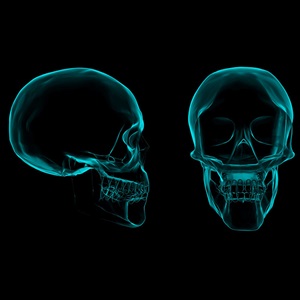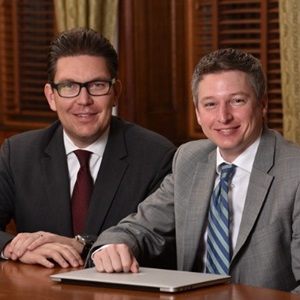Face Transplant
What You Need to Know
- A face transplant can be life changing for individuals who have been disfigured after a severe injury, were born with differences (or birth defects) or suffered from burns
- A face transplant is a complex procedure and involves: a rigorous screening process, detailed surgical preparation,16 hours or more of surgery, nerve regeneration, physical therapy and immunosuppressive medications taken for the rest of the patient’s life.
- Since 2021, more than 45 patients have received full or partial face transplants at institutions around the world.
Candidates for Face Transplant
Face transplant candidates must:
- Be 18 – 60 years of age
- Have experienced facial trauma or disfigurement
- Have no history of HIV or Hepatitis C
- Be able to take immunosuppressive drugs
- Have no history of cancer for at least five years
- Be willing to forgo pregnancy for one year
Consult with your transplant surgeon for more information about eligibility.
Screening for Face Transplant
Face transplant candidates undergo rigorous physical and psychological screening. Your facial transplant team will determine the health of your muscle and nerves to ensure they can support nerve regeneration. Regrowth of the nerves after transplantation is essential for adequate motor function.
Candidates and their families may also be interviewed to evaluate whether they’ll be able to adhere to requirements for recovery, including taking anti-rejection medications and attending physical therapy. They will also be evaluated for their ability to overcome any short-term setbacks.
Digital Reality for Facial Transplants

Learn more about new technology aimed at improving chewing functions for patients.
Face Transplant Donors
Face donation is not included in the commonly used driver’s license organ donation registry. Face donation involves a special and sensitive consent process with donor families. In addition to matching blood type and immunological parameters like in solid organ transplantation, face donation involves careful emphasis on matching skin color, skin tone, gender, ethnicity, race and the size of the face and head. Once you are approved for a face transplant, you may have to wait anywhere from a few weeks to many months for a donor match.
Face Transplant Surgery
Patients waiting for a face donation can be called into the hospital for surgery at any time. When the patient arrives to the hospital, they are evaluated to ensure they are healthy enough to undergo surgery. An ultrasound machine may be used to help mark out veins to be connected on your face. At that point, you may receive medications to help them tolerate immunosuppression.
Once the donor’s face is available, two teams of surgeons start operating simultaneously. One team would prepare your face to accept the transplant while the other prepares the donor for transplantation. Once you and the donor are surgically prepared, the surgeons will connect the bones with plates and screws. Surgeons will use a surgical microscope to connect the arteries, nerves and veins. Once blood is flowing through the transplanted face, any remaining muscles and nerves are connected, and the skin and soft tissues are closed. Facial transplant surgery typically takes 16 hours or more depending on how much and which parts of the face need to be restored.
After surgery, you will be placed in a surgical intensive care unit (SICU) for about one week. Once the surgical team feels comfortable with you being moved out of the SICU, you will move to a transplant unit, where you will receive care specially designed for all types of transplant patients.
You can expect to be in the hospital for about three to four weeks. The amount of time spent in the hospital depends on several things, including the amount of support and assistance you have at home, the distance from your home to the hospital for follow-up care, and any delays that might occur in recovery.
Reconstructive Transplant Research Lab
Surgeons and researchers at Johns Hopkins are leading research aimed at warding against rejection and reducing the number of medications patients have to take for the rest of their lives.
Face Transplant Risks
As with any organ transplant, the greatest risk is that your body will regard your new limb as a foreign object and your immune system will fight against it. With face transplants, rejection can appear as a rash that could be spotty, patchy or blotchy. It could appear anywhere on the face and is usually painless.
As rejection almost always appears first in the skin, patients and their caregivers are encouraged to carefully watch for the signs and report to the physician for timely biopsy and treatment. Unlike internal organ transplants, it is easy to detect and monitor signs of rejection in the face. This allows for early medical intervention. However, as long as the patient follows the prescribed immunosuppressant regimen, there has been no evidence that the transplant will fail.
Exploring the Vanguard of Transplantation: Hand, Face and Urogenital

In a span of just five years, Johns Hopkins Medicine has protocols approved and in place for hand, face and penile transplants—an indication of just how quickly its transplant portfolio has grown, and how the entire field has evolved.
Rehabilitation after Face Transplant Surgery
Face transplant patients should be prepared for extensive rehabilitation, which can last from four to six months. Some parts of rehabilitation may be required for life. The goal for rehabilitation is for the patient to regain function and movement so that he or she can participate confidently in daily activities.
The functions performed by the face include speech, communication, smiling, eating and drinking, blinking and emotional expression. Therapy exercises may include muscle relaxation or stimulation, mirror exercises, facial expression training, speech and swallowing training, re-educating the olfactory system and more.


